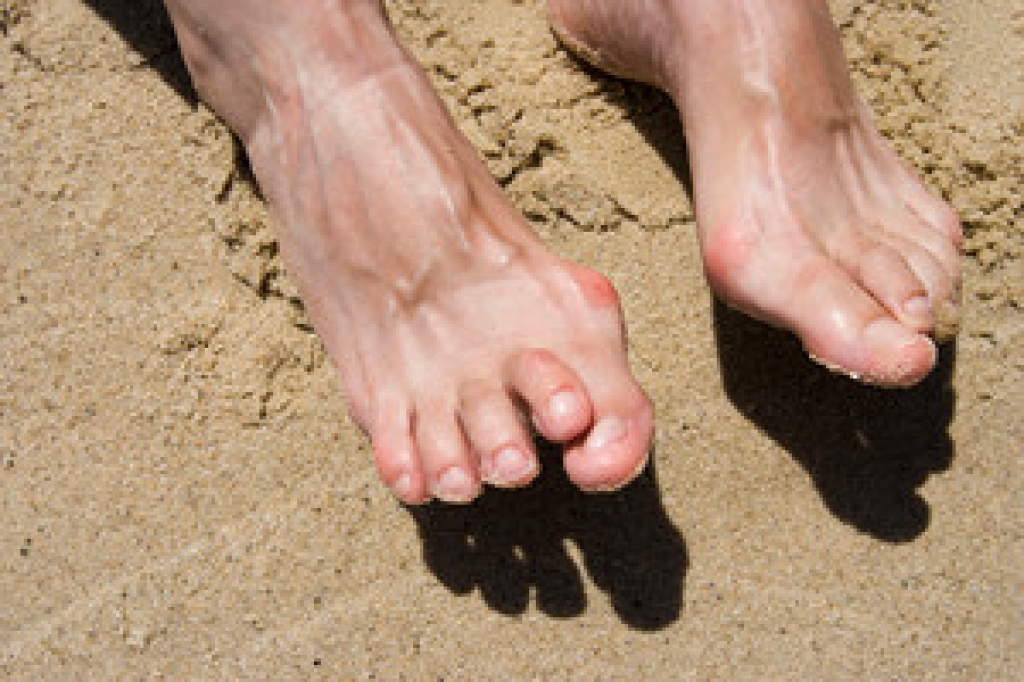 Usually, toes point forward. When one of your toes (usually the 2nd or 3rd toe) bends downward, hammertoe is present. There are many reasons you may develop a hammertoe, such as having bunions, certain injuries, high arches, or you may have a genetic proclivity that makes you more likely to develop them. However, the most common reason hammertoe develops is from wearing shoes that are too tight and pointy, which cause your toes to squeeze together if you wear them for a prolonged period of time. You can help avoid developing a hammertoe by choosing shoes that fit properly, have a wider toe box, soft uppers, and plenty of arch support. Contact a podiatrist who can treat your hammertoe and may suggest certain footwear that will help prevent hammertoes from occurring.
Usually, toes point forward. When one of your toes (usually the 2nd or 3rd toe) bends downward, hammertoe is present. There are many reasons you may develop a hammertoe, such as having bunions, certain injuries, high arches, or you may have a genetic proclivity that makes you more likely to develop them. However, the most common reason hammertoe develops is from wearing shoes that are too tight and pointy, which cause your toes to squeeze together if you wear them for a prolonged period of time. You can help avoid developing a hammertoe by choosing shoes that fit properly, have a wider toe box, soft uppers, and plenty of arch support. Contact a podiatrist who can treat your hammertoe and may suggest certain footwear that will help prevent hammertoes from occurring.
Hammertoe
Hammertoes can be a painful condition to live with. For more information, contact Mital Patel, DPM from South Shore Podiatry. Our doctor will answer any of your foot- and ankle-related questions.
Hammertoe is a foot deformity that affects the joints of the second, third, fourth, or fifth toes of your feet. It is a painful foot condition in which these toes curl and arch up, which can often lead to pain when wearing footwear.
Symptoms
- Pain in the affected toes
- Development of corns or calluses due to friction
- Inflammation
- Redness
- Contracture of the toes
Causes
Genetics – People who are genetically predisposed to hammertoe are often more susceptible
Arthritis – Because arthritis affects the joints in your toes, further deformities stemming from arthritis can occur
Trauma – Direct trauma to the toes could potentially lead to hammertoe
Ill-fitting shoes – Undue pressure on the front of the toes from ill-fitting shoes can potentially lead to the development of hammertoe
Treatment
Orthotics – Custom made inserts can be used to help relieve pressure placed on the toes and therefore relieve some of the pain associated with it
Medications – Oral medications such as anti-inflammatories or NSAIDs could be used to treat the pain and inflammation hammertoes causes. Injections of corticosteroids are also sometimes used
Surgery – In more severe cases where the hammertoes have become more rigid, foot surgery is a potential option
If you have any questions, please feel free to contact our office located in Massapequa, NY . We offer the newest diagnostic and treatment technologies for all your foot care needs.